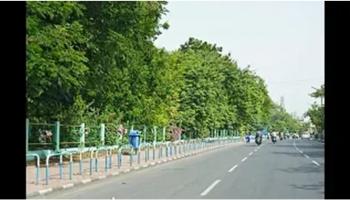/topics/water-management
Water Management
Policies and laws related to water bodies, water pollution and regulation - A collection
Posted on 13 Nov, 2010 01:00 AMIndia Water Portal has recently uploaded a set of important policies and laws. This collection pertains to water bodies, water pollution and regulation and more.
Policies related to conservation of water bodies
Status of water supply, sanitation and solid waste management in urban areas – A research study by CPHEEO (2005)
Posted on 11 Nov, 2010 10:16 PMThis study by the Central Public Health and Environmental Engineering Organisation (CPHEEO) assesses the status of water supply, sanitation and solid waste management in selected 300 cities and towns of India including all metropolitan cities and selected Class I and Class II urban centres. It estimates the requirement of funds for full coverage of population by these services in the urban areas of the country from 1999 to 2022 (at five yearly intervals). Overall, the study confirms the normal notion that the metropolitan cities are better provided for than the other size class of urban centres.
Storage above design full tank level in Pichola-Swaroop Saagar and Fatah Saagar lakes of Udaipur - A threat to safety
Posted on 10 Nov, 2010 10:02 PMThe historical lakes of Udaipur, Rajasthan, namely Pichola - Swaroop Saagar and Fatah Saagar are more than a century old. Filling them above original design full tank level on public demand or over enthusiasm may prove to be a threat to safety.
Water Jobs via DevNetJobsIndia.org dated November 10, 2010
Posted on 10 Nov, 2010 02:08 PMContent Courtesy: DevNetJobsIndia
- Water and Habitat Project Manager
International Committee of the Red Cross
Heavy rains, cyclones and floods affect the life of millions; News Roundup (1-7 November 2010)
Posted on 09 Nov, 2010 08:09 PMRecent news indicates extensive reports on the threat and destruction unleashed by cyclone Jal in the three states of Andhra Pradesh, Karnataka and Tamil Nadu, with the states of Andhra Pradesh and Karnataka being affected the most. Cyclone Jal has led to heavy rainfall in both these states leading to floods and a heavy death toll in the coastal districts of both the states, besides reports of destruction of agricultural produce in the state of Karnataka.
South India
Andhra Pradesh
- Administration on high alert with the threat of cyclone Jal approaching the Andhra Pradesh coastline
- Cyclone 'Jal' claims lives in Andhra Pradesh
- Cyclone 'Jal' claims five lives in Andhra Pradesh
- Cyclone threat in Andhra, rains kill 20
- Andhra rains cause havoc, death toll rises to 25
- Rain claims 4 lives in Vizag, 2 in East Godavari
- Rain fury continues in Andhra Pradesh's coastal districts
- Heavy rains wreak havoc in coastal Andhra Pradesh
Open courseware of national programme on technology enhanced learning A summary of civil engineering courses
Posted on 06 Nov, 2010 07:59 AMThe India Water Portal is pleased to announce to its users, that the Civil Engineering courses from the multi-faceted and multi-modal open courseware of National Programme on Technology Enhanced Learning (NPTEL) have been put together in the form of a summary. These courses are being carried out by Indian Institutes of Technology and the Indian Institute of Science Bangalore as a collaborative project supported by the Ministry of Human Resource Development (Government of India) to enhance the quality of engineering education in the country, by developing curriculum based video and web courses. In these web based lectures, the authors have developed the subject in detail and in stages in a student-friendly manner.
A case study of Dongs – The traditional water management system of the Bodo people
Posted on 05 Nov, 2010 05:24 PMThis report by SDTT presents a case study on the traditional water management system of the bodo people in Assam and North Bengal, the dongs. Dongs are man-made structures akin to canals, to route water from available water sources, which are usually perennial, to the paddy cultivating fields. The water sources are small rivers, perennial swamps, beel, streams, etc. Dong can have a breadth of 7-15 feet on average or even more. The breadth gradually increases over the course of its flow from the source till the end point.
News roundup (22 - 31 October 2010) :" India: Land of many cell phones, but fewer toilets"
Posted on 03 Nov, 2010 08:50 AMWastewater/Sanitation
Water Jobs via DevNetJobsIndia.org dated October 27, 2010
Posted on 27 Oct, 2010 01:37 PMContent Courtesy: DevNetJobsIndia
- Short Term Assignment - Social Researcher / Documentation Specialist
Water Sanitation and Hygiene (WASH) Institute
The Maharashtra groundwater (regulation for drinking water purposes) act - International Environmental Law Research Centre (1993)
Posted on 22 Oct, 2010 05:09 PMThe document describes the Maharashtra Groundwater Act, which is an Act to regulate the exploitation of groundwater for the protection of public drinking water sources and includes the details of :
- Short title and commencement of the Act
- Definitions of the terms used in the Act
- Protection measures for public drinking water sources
- Prohibition of construction of wells within certain limits
- Declaration of water scarcity area
- Regulation of extraction of water from wells in water scarcity areas
- Declaration of over exploited watershed
- Prohibition of sinking of well in over exploited watershed
- Prohibition of extraction of water from an existing well for certain period
- Closing down existing well
- Power of entry upon any land for obtaining information
- Power to stop contravention of the provisions of section 3, 5, 7, 8 or 9
- Payment of compensation
- Bar to claim compensation







